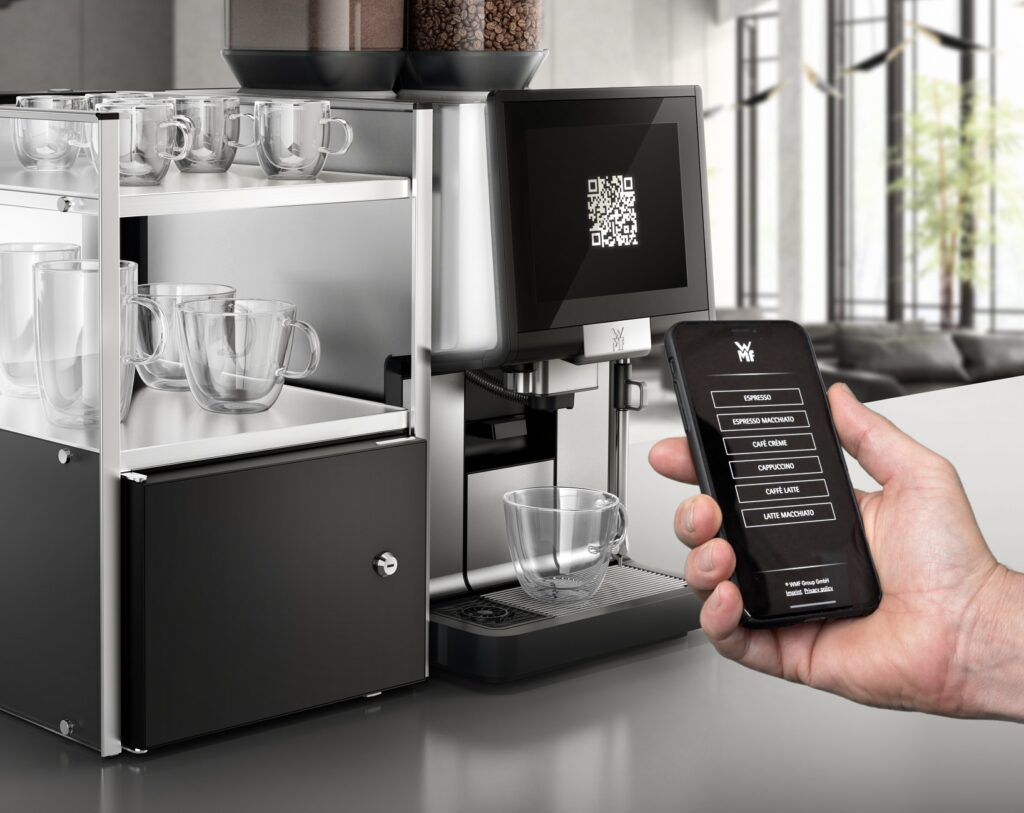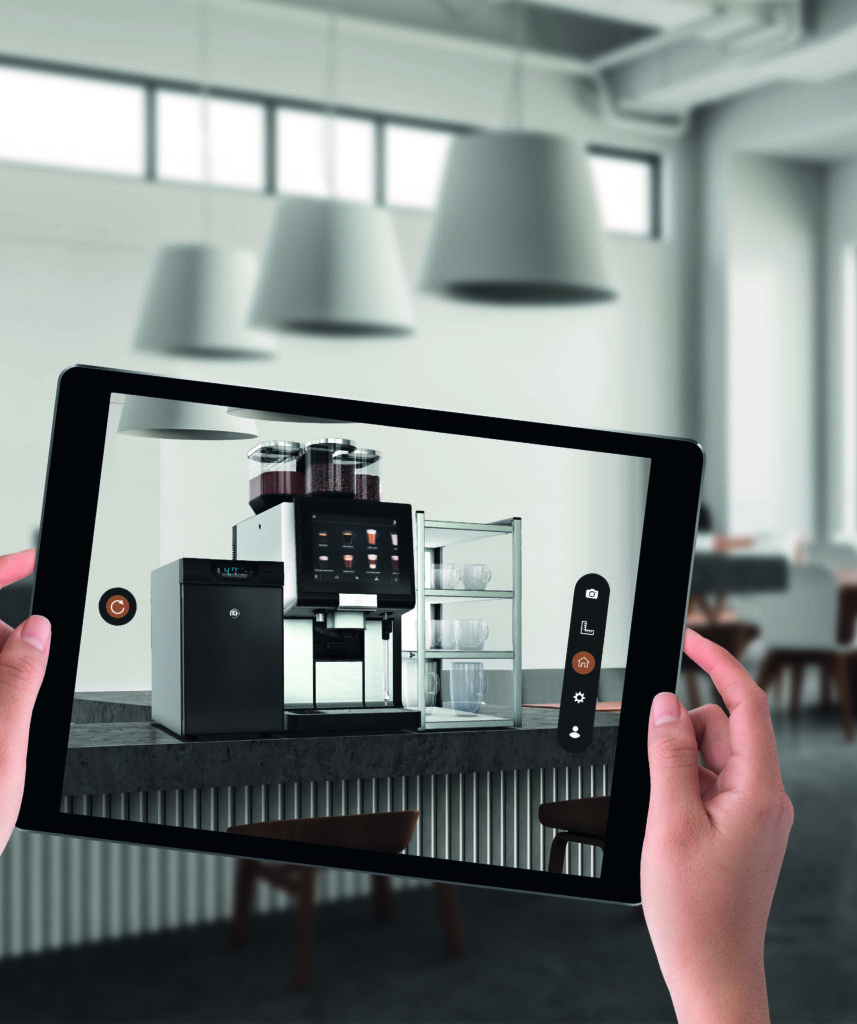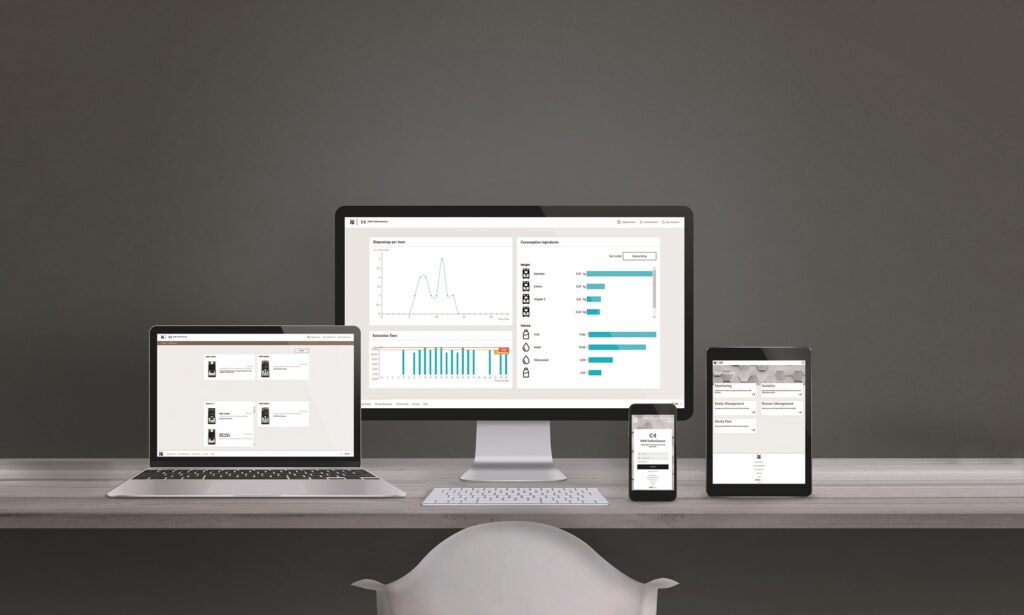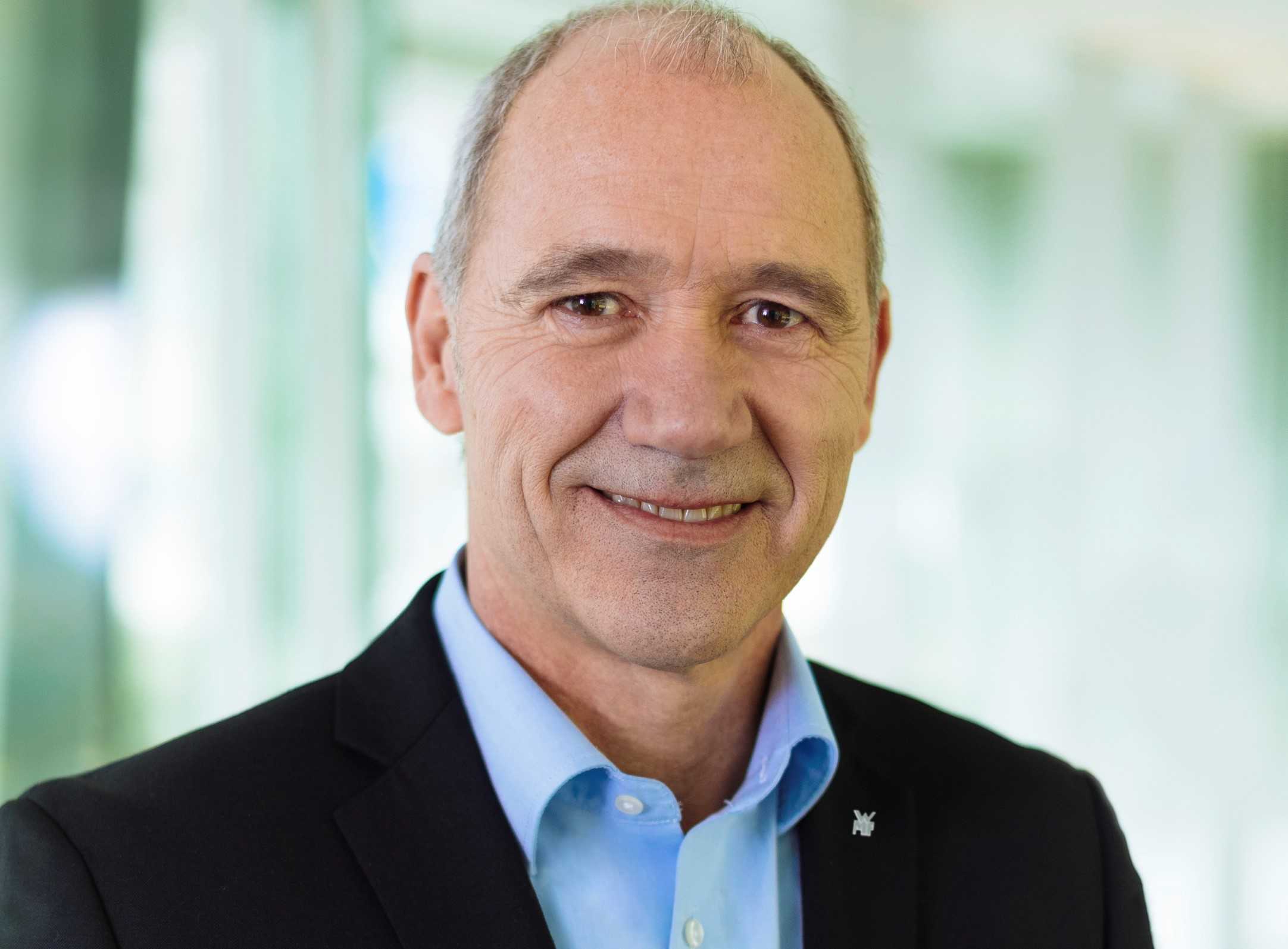MILAN – How is digital transformation changing the coffee industry and which are the effects already noticeable in today’s day-to-day business? Which innovations have been significantly driven by increasing digitalisation? We asked these and other questions to Frank Göltenboth, Vice President R&D, Global Business Unit Coffee Machines for WMF Group, to understand how a global market leader is shaping its strategies in the era of digitalisation.
What impact is the digital transformation having on the development of the coffee industry?
For some of our customers, the digital transformation is having a massive impact because entirely new business models are emerging as a result of the data that is being made available. These include flexible operator models such as “pay per cup” and rental concepts that allow franchisors to offer new performance-based contract models. Potential for optimisation is also arising when it comes to monitoring the quality and performance of the machine fleet and outlets.
Are the effects already noticeable in today’s day-to-day business?
In addition to attractive future prospects, the data availability obviously also presents great opportunities in day-to-day business – from adapting the beverages offered and recipe variations according to demand right through to procurement and machine care. However, we are seeing that most customers are approaching these topics cautiously. Many companies are still not sure how they can benefit from the data that is collected. In this light, it is important to recognise that big data can only provide groundbreaking answers if the right questions are asked. Data alone does not make you smart. Our digital team is therefore working intensively to give customers guidance and introduce effective consulting concepts.
What innovations are you currently seeing on the market that have been significantly driven by increasing digitalisation?
Robot systems are the most striking innovations at the moment – by these I mean self-sufficient coffee stations that deliver freshly brewed coffee in response to a pre-order or touchscreen interaction. The robot café “MyAppCafé” here in Germany and “CaféX” in the USA are examples of these. Another innovation segment relates to the integration of modern payment systems and the communication with well-known solutions such as AliPay and WeChat Pay. China is an absolute forerunner in this regard. In Europe, Scandinavia and Switzerland are the first movers in the field of mobile payment. A third aspect has to be networking with customers’ back-end systems, such as the ERP system and sometimes in conjunction with other IoT devices: Here the coffee machines report their resource consumption to the ERP system while a stored Kanban buffer monitors supply. If a defined threshold value is reached in the provisioning strategy, the business application automatically triggers a follow-up order for the outlets. The tracked consumption data also allow conclusions to be drawn about the actual use of planned raw materials, for example in the case of combined rental models comprising a machine as well as coffee beans.

Where does digitalisation have the biggest effects on user interaction with coffee machines? (For example, process stability, maintenance and care, operation, ordering and payment, etc.)
First and foremost, the effects are especially apparent in the stabilisation of processes. By means of intelligent sensors, the machine can “independently” monitor and control its quality-relevant processes in real time, for example using the “Dynamic Coffee Assist” or “Dynamic Milk Assist” technological innovations developed and introduced by WMF. Cloud-based big data methods also provide support for analysing machine states, in which control algorithms and intervention thresholds allow the product, process and sensor data gathered from all networked, fully automatic machines to be consolidated and analysed on our cloud platform and specific conclusions to be drawn about future “events”. Consequently, the customer can, for example, predict when the bean hopper and milk container will be empty with the aim of reducing downtimes and further increasing availability. In turn, the service team can monitor certain machine characteristics, i.e. by analysing the wear parameters of grinder disks, in order to determine when a machine may encounter an error or a specific component may reach the end of its service life. Service technicians can then use this information to take preventive action so that a service call does not become necessary.
What is the advantage of an “external” analysis in the cloud?
The advantage of storing data on our cloud platform is that its interpretation is more conclusive. The analysis of the data and behaviour of many networked machines permits more reliable and flexible event simulation than the definition of “hard” intervention thresholds for individual machines. For example, if a parameter measured for a grinder disk indicates that it needs to be replaced without delay, this action needs to be performed immediately when the data is stored directly in the machine. In contrast, if the data is sent to the cloud for analysis, a different or more flexible decision can be made based on what is known about similar behaviour across a large number of machines. The measures deemed necessary as a result of an analysis can also be implemented more efficiently thanks to networking. So, if when analysing machine states, it is detected that the interpretation parameters need to be adjusted, this can be carried out centrally from the cloud or the connected dashboard. The technician does not have to go to each individual machine to make the adjustment: everything happens “remotely”.
What impact is digitalisation having on WMF ’s development strategy?
Our roadmap is now made up of two tracks running in parallel: the “traditional” product and feature roadmap and the digital roadmap. Each area contains tailored innovation processes and committees for defining and developing new topics. In this context, the digital team deals with all influential factors: from relevant machine aspects and our digital platform right through to robotic APIs and interface concepts for third-party systems to access the data in our cloud. Here, we must not forget the ever greater requirements being placed on sensor systems. The question as to which quality and performance-relevant factors can be “sensed” and controlled in real time by the machines themselves opens up a wide field of innovation. Of course, the two tracks are intertwined with one another so that hardware, software and digital solutions work together seamlessly.

What else is a source of impetus when defining the roadmap?
A good example of new business models can be seen in copiers and printers, which are now hardly ever sold as hardware in a commercial setting, but rather only as a pure “copying service”. Sometimes you need extreme examples to spur you on, as demonstrated by Caterpillar, which up to now “only” sold HGVs. Today, this digital pioneer concentrates on “rock tonne kilometres”. This means that the focus has been shifted from the traditional product to the entire ecosystem of the business model: the vehicle, the distance covered and optimal loading, i.e. the perfect crushing of material so that as much load as possible can be transported per kilometre driven. This form of innovative thinking sets a precedent and can definitely also lead the way in our coffee industry. It broadens the horizon for developing the traditional core business further and forming an even more comprehensive understanding of customer benefit. WMF ’s source of impetus is therefore the consideration of the entire value-added chain and in particular the question as to what is relevant to our success and the success of our customers.
Could you please provide an example from the coffee industry?
In the case of new models such as pay per cup, for example, it is no longer the machine itself that is being paid for, but rather the service it provides. When defining the unit price, not only do the coffee price and machine price play a role, but also the service. The latter manifests itself transparently and needs to be optimised just as much as other machine and process costs. The entire service area therefore transitions from a sales-driven business model to a cost model. This incorporation of all aspects of a business model is pushing our industry forward. It gives rise to new ideas in light of the constant data availability and transparency made possible by digitalisation. Of course, our customers are driving innovation as well by setting us tasks that demand creative and innovative solutions.
Where are the biggest areas of innovation at WMF at present?
The framework of action encompassing all our innovative efforts at WMF is undoubtedly the customer-oriented, end-to-end optimisation of processes within the entire business model. However, our starting point is and remains the consistent improvement of coffee quality and machine reliability. With this goal of offering the best end product in mind, digitalisation and automation play important roles in improving processes, both within the machine and in terms of customers’ quality and procurement control loops. In this context, we are focusing, amongst other things, on new ways of accelerating ordering processes at the customer touchpoint through digital means, such as the pre-ordering and pre-payment of beverages via IoT device. In the current coronavirus pandemic, the demand for contactless payment methods has skyrocketed. Within the scope of our customer-centric innovation processes, we also see enormous future potential in the use of automation technology.
How do customers and other WMF departments (e.g. service) influence the development roadmap?
Alongside the parallel development of product and digital features, our organisation is also split into the areas of customising and strategic roadmap development. A company that places emphasis on customer centricity, as WMF does, needs to clearly allocate resources with a view to customer-specific development. Time, money and know-how must be made available to proactively ask customers what they want and to record, understand and implement these requirements. It goes without saying that the resulting concepts and results must be closely tied up with one’s own roadmap development, otherwise you will end up with a patchwork of solutions that is nearly impossible to manage.
However, it is equally important to form your own clear vision of the future and predict new requirements. Identifying and embracing trends, developing solutions in advance and anticipating upcoming needs – the ability to do this also constitutes maximum customer orientation. After all, many businesses are only able to express what they want when they are presented with an appropriate solution. In other words, we are currently working on a modular solution platform that pre-empts the customer requirements of tomorrow and can be used across the board for various customers, products and markets.

How do you strike a balance between innovation leadership and customer-oriented development?
It’s all about promoting a forward-looking culture of innovation that predicts the customer needs of the future and gives these a structure. At the same time, customer requirements need to be identified proactively and responded to in an agile way. There are obviously also customers that we involve in the strategic process of platform innovation. This allows us to determine early on whether our ideas will take root or whether we have maybe overlooked certain issues.
How are past practical experiences incorporated in the development of new products?
We have established a process that ensures that the service department as well as the quality assurance, manufacturing and purchasing departments are integrated early on in the development of new products. As early as the stages of defining requirements and developing the concept, all departments are actively asked to provide their input. This is mainly about formulating “lessons learned” as new requirements and harmonising potentially opposing priorities. An example here would be reconciling the call for increasingly compact, space-saving solutions with the need for high serviceability (i.e. convenient machine accessibility). What’s more, the ever increasing complexity of internal machine values should not exceed the expertise of the technicians. At the end of the day, the approach that leads to the highest level of customer satisfaction will always win. Besides these operational procedures, we have also put cross-departmental strategic processes in place to address specific issues with maximum expertise, whether in relation to future production depths or international supplier strategies.
Do the increasingly shorter innovation cycles contradict the quality standard of a “Made in Germany” philosophy?
We are regarded as a leading manufacturer in the industry when it comes to quality and reliability. The accelerated go-to-market strategies and innovation cycles do not contradict this position. If anything, we have the task of adapting our internal processes to the dynamic nature of digital transformation. This can be achieved, for example, by automating tests and increasing the frequency of software releases and updates through the implementation of agile methods.
What KPIs steer the development processes?
On the one hand, we work with project-specific KPIs. These help us monitor the project objectives and progress with regard to adherence to budgets and deadlines. On the other hand, cross-project figures additionally focus on general indicators such as innovation rates, average age of the machine portfolio and the share of development costs in net sales.
How do the results and findings from WMF CoffeeConnect influence the (further) development of machines?
Firstly, on a quality level, WMF CoffeeConnect allows us to directly identify potential product weaknesses, detect error patterns and respond to these immediately. Secondly, the telemetric solution provides insights into user behaviour. Shifting beverage trends and changes in quantity units (e.g. how many millilitres an average cappuccino has) are immediately visible and additionally offer development impetus.
What can we expect from WMF Professional Coffee Machines next year?
As always, customers can expect that WMF will offer solutions and functions that are unique in the industry. Our digital team is also working hard on raising our customers’ awareness of the opportunities presented by digitalisation, as mentioned earlier. What’s essential in this regard is translating the sometimes vague expectations into tangible solution suggestions and consulting needs. The seamless interplay between the technical, IT and sales departments as well as transparent project processes and responsibilities form the basis of success here.
The coffee machine industry in 20 years: will digitalisation completely shake up today’s machine concepts as we know them?
We believe in the evolution of the industry rather than a revolution. The innovation cycles required for this will continue to get shorter and the challenge here will be mastering the balancing act between action and reaction. Innovation without a strategic framework is just as unsustainable as a customer-centric approach without a clear route. Our task will be to keep customer orientation and innovation leadership in harmony, even during the shortest of development cycles. We will pull this off with a future-oriented yet solid solution platform that makes it possible for us to respond to customer requirements with great agility.
















